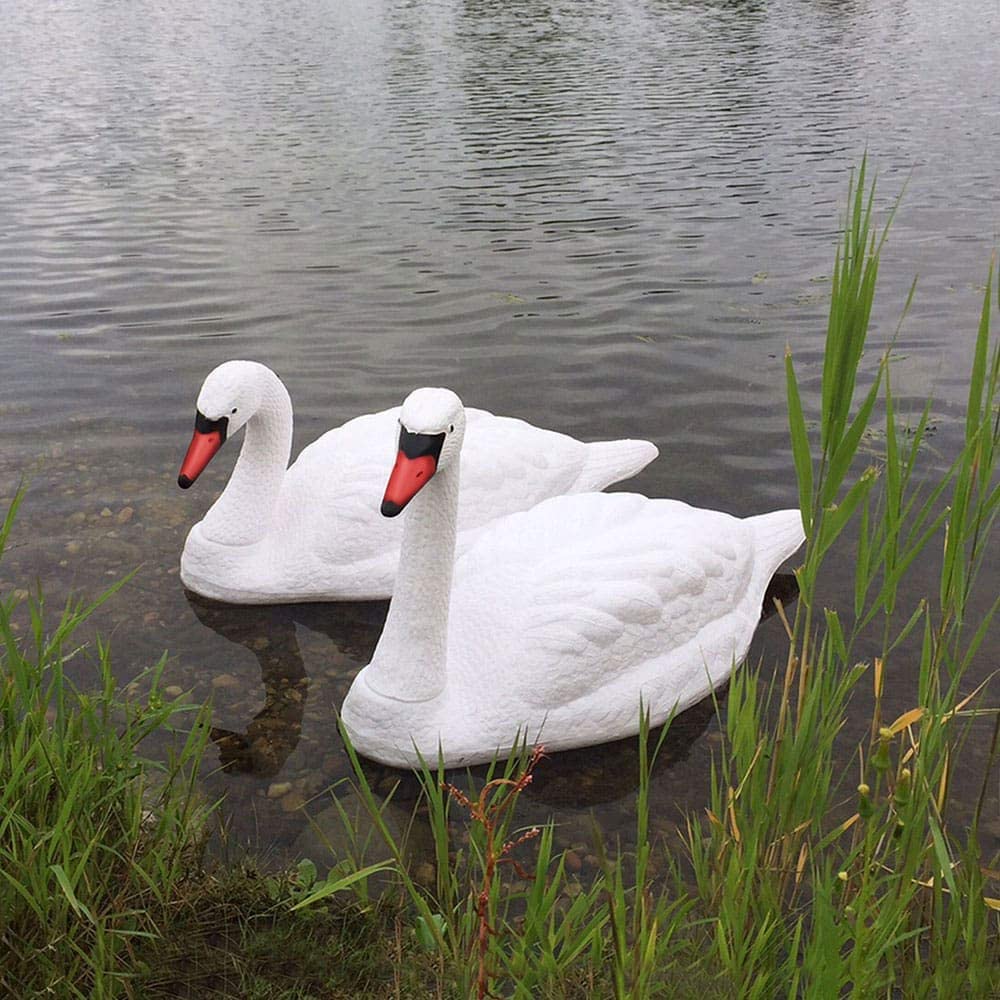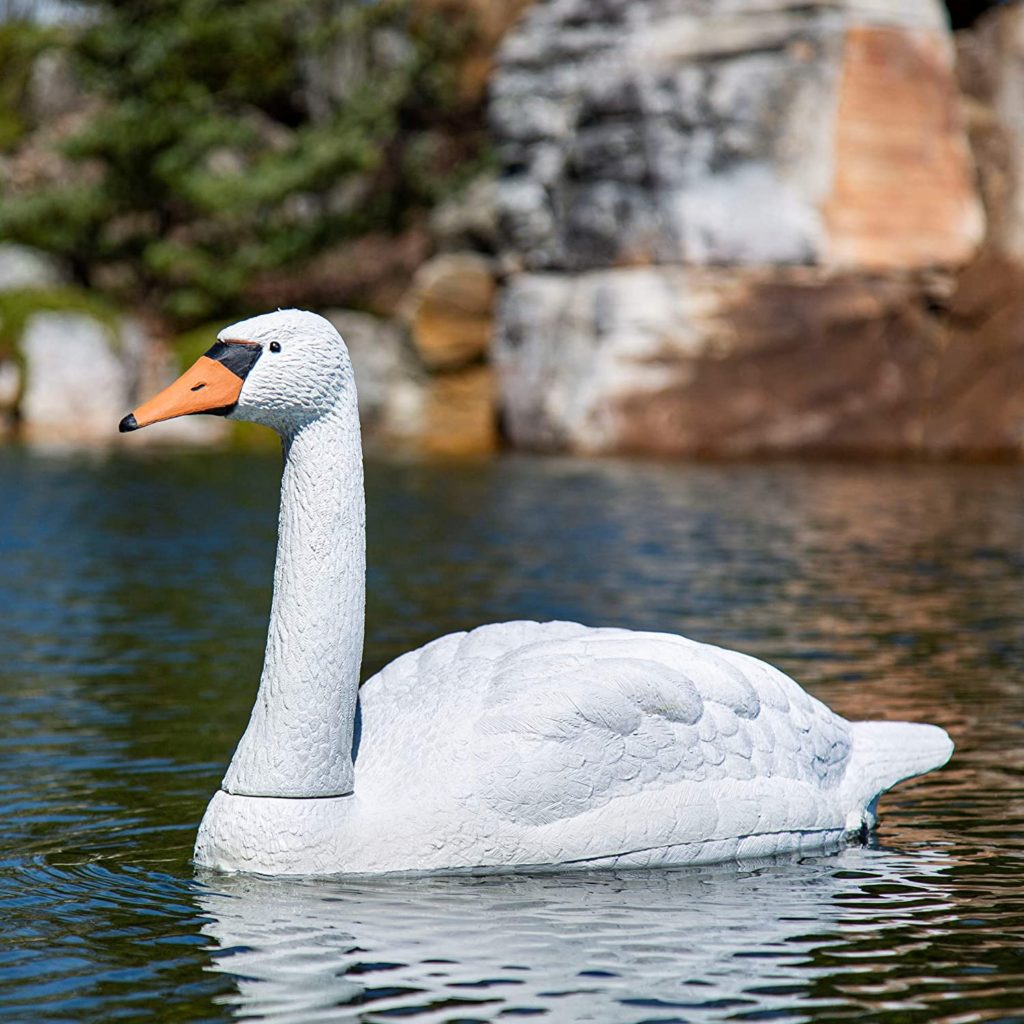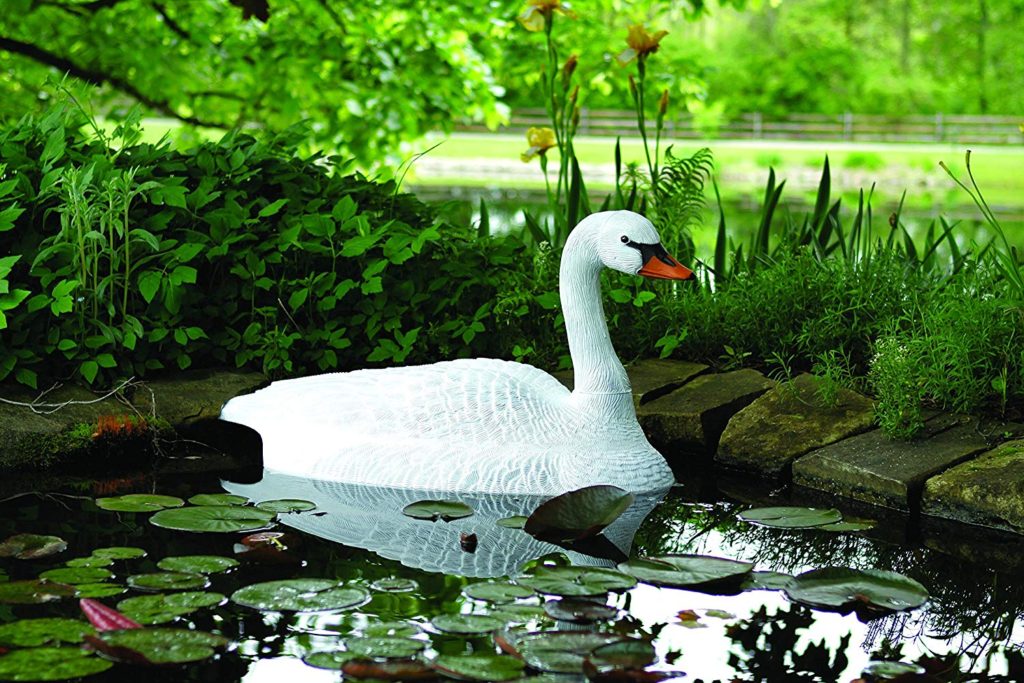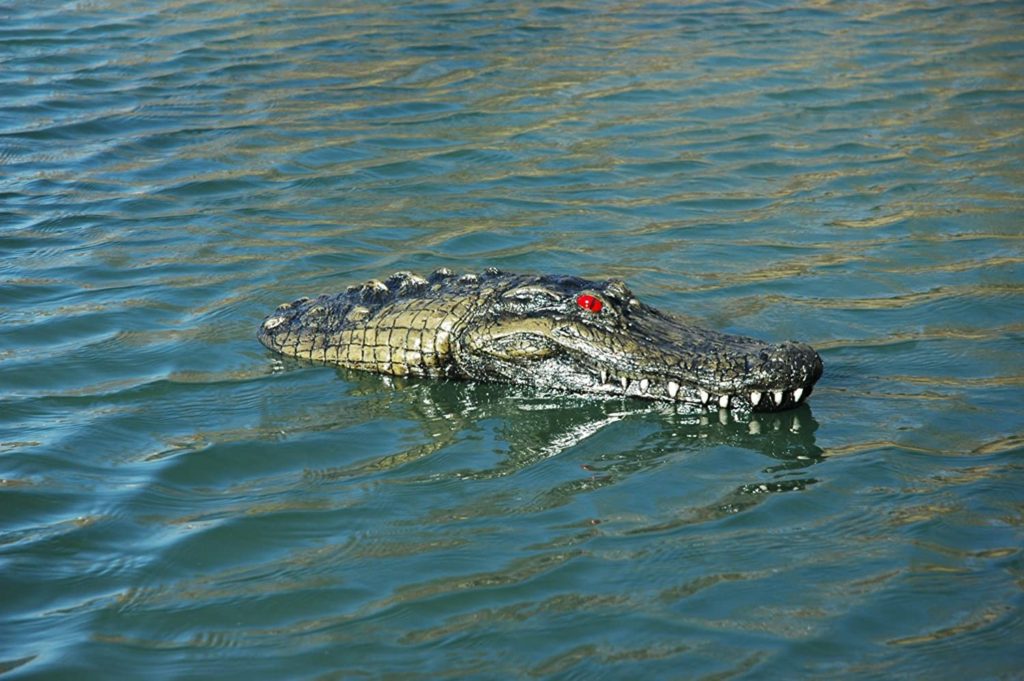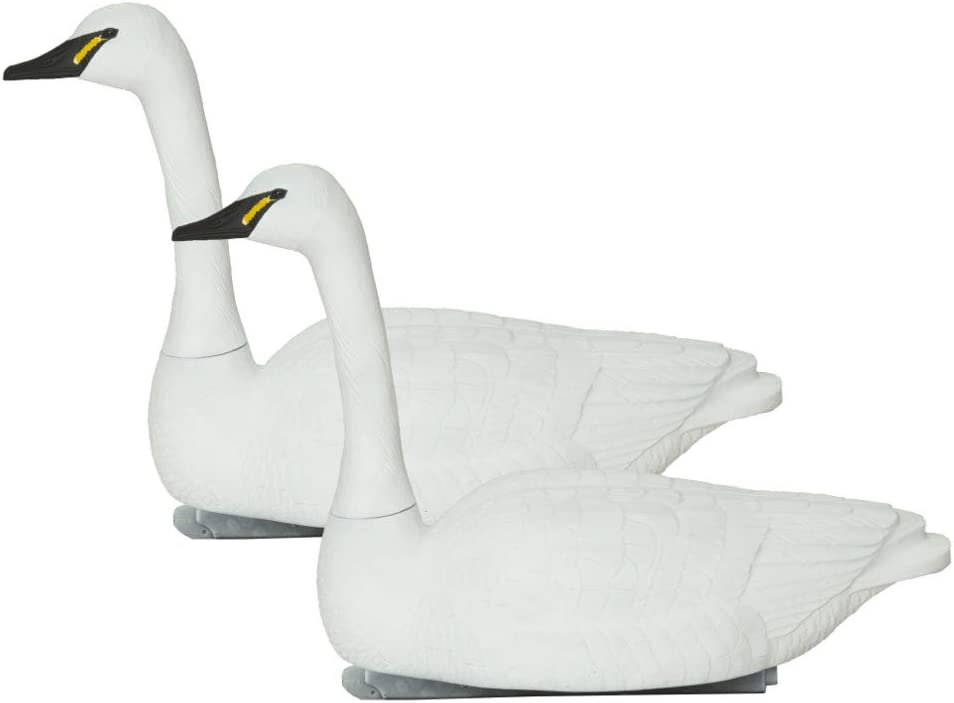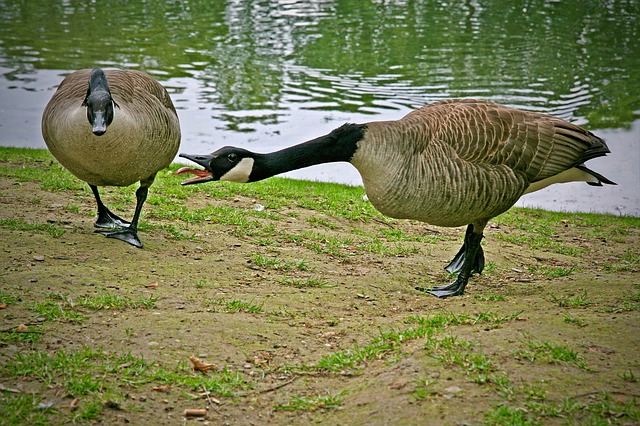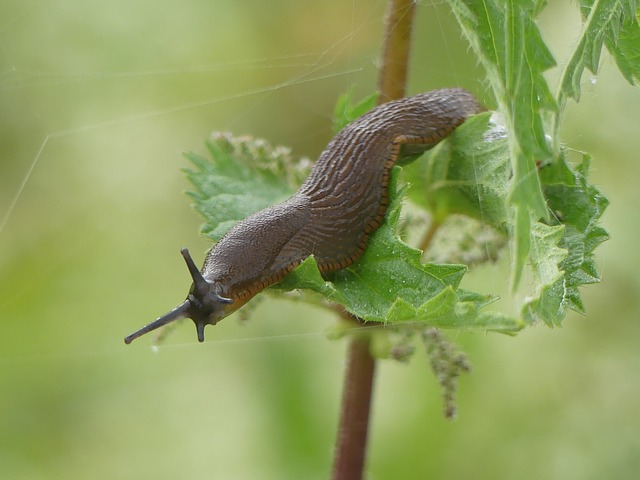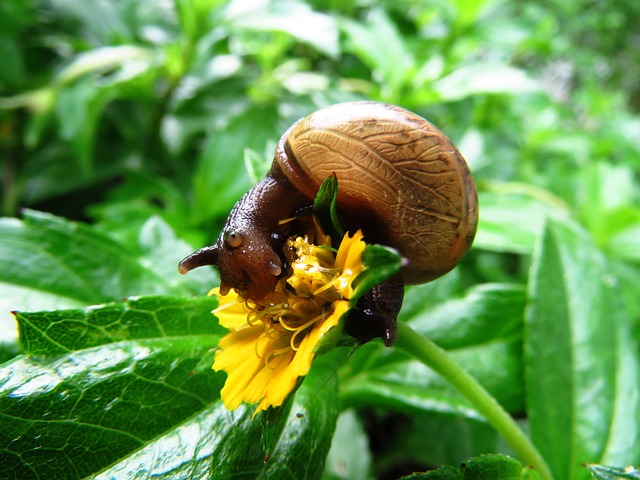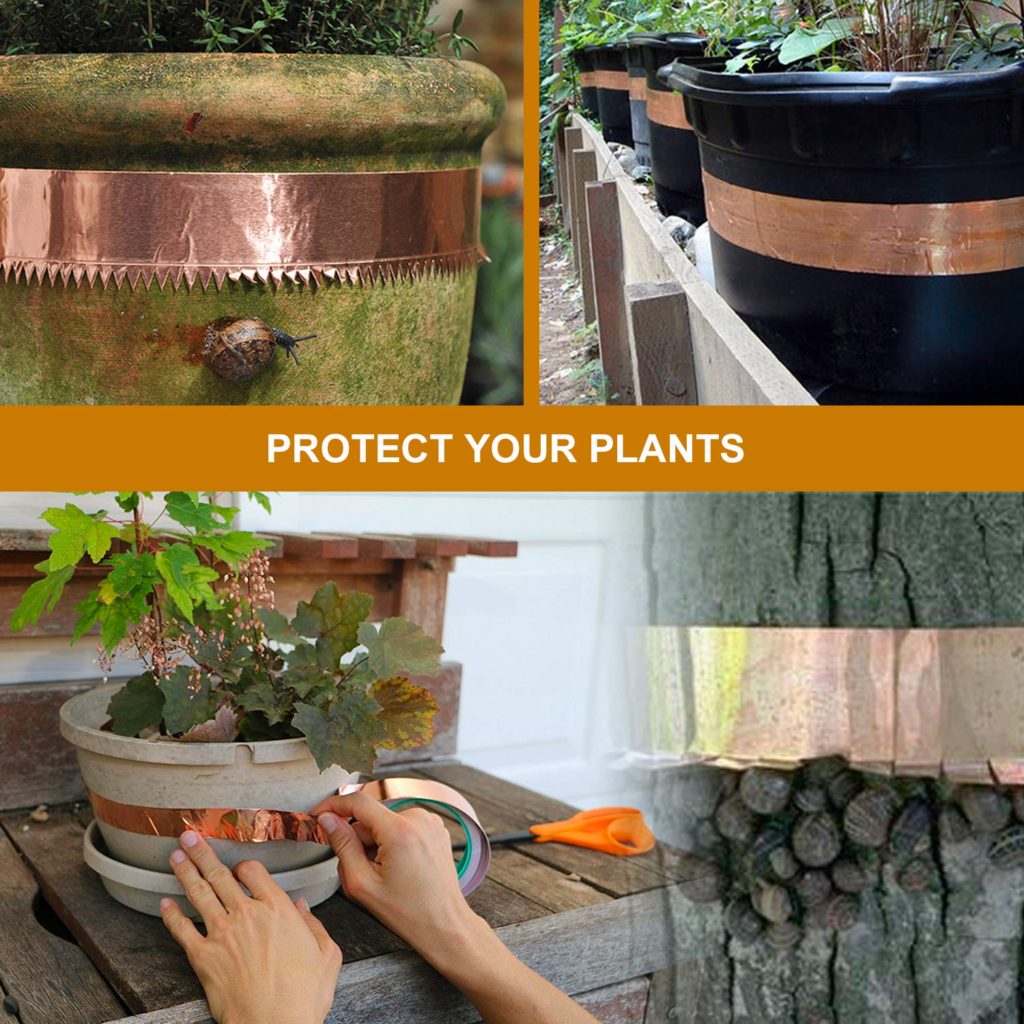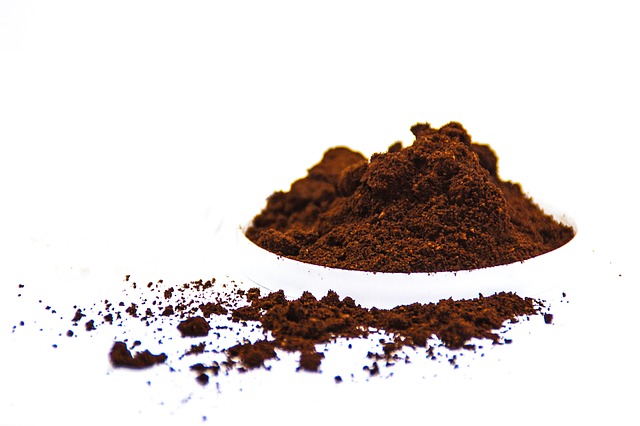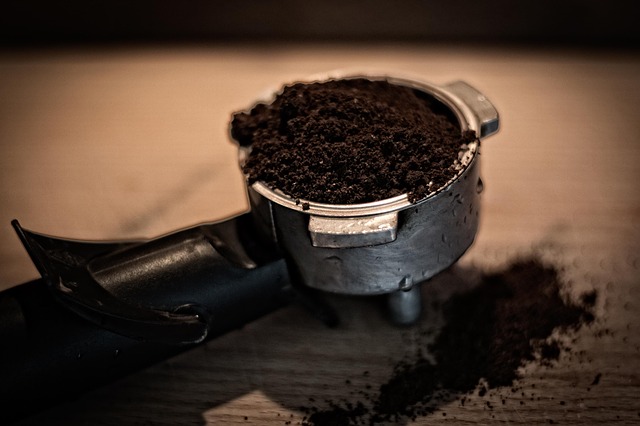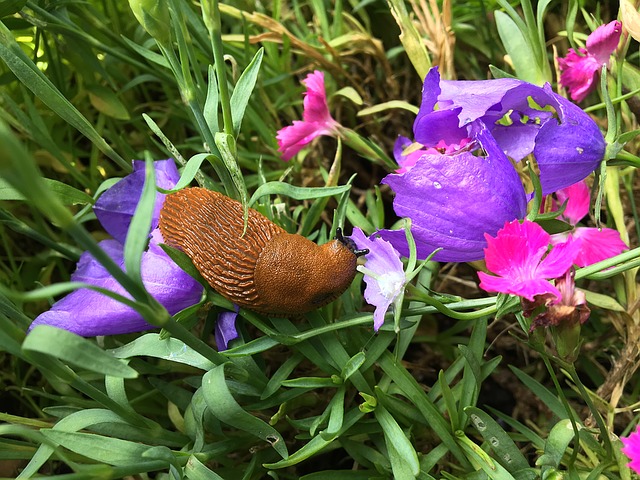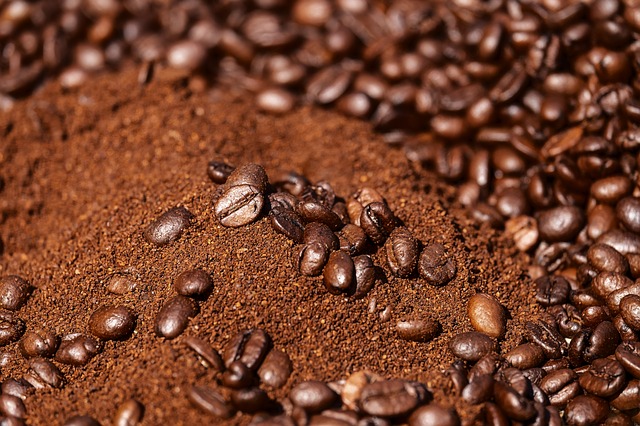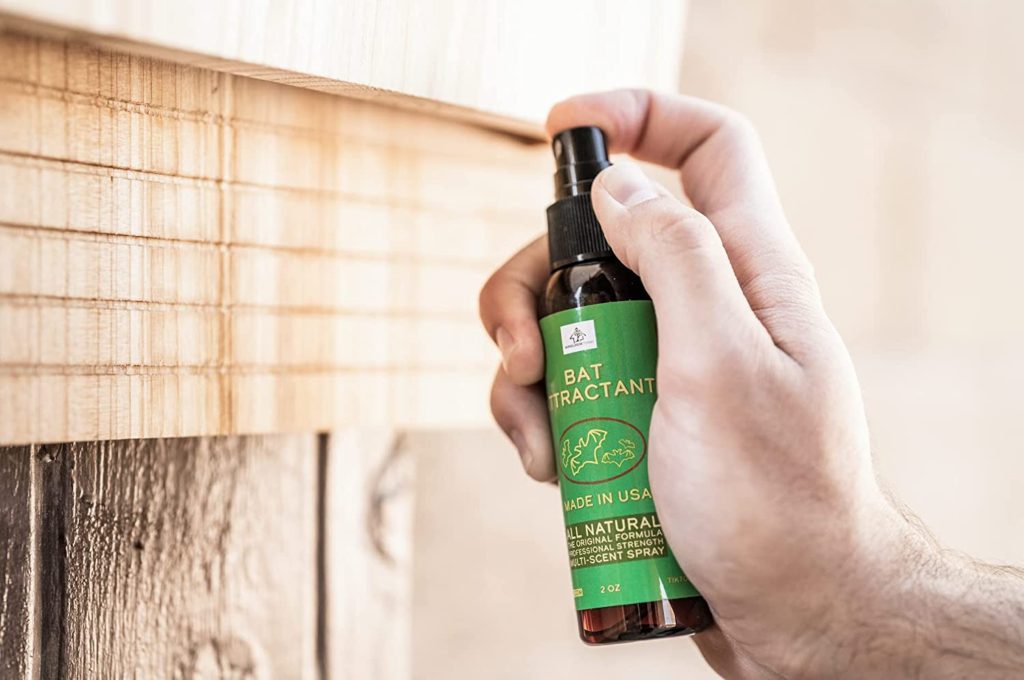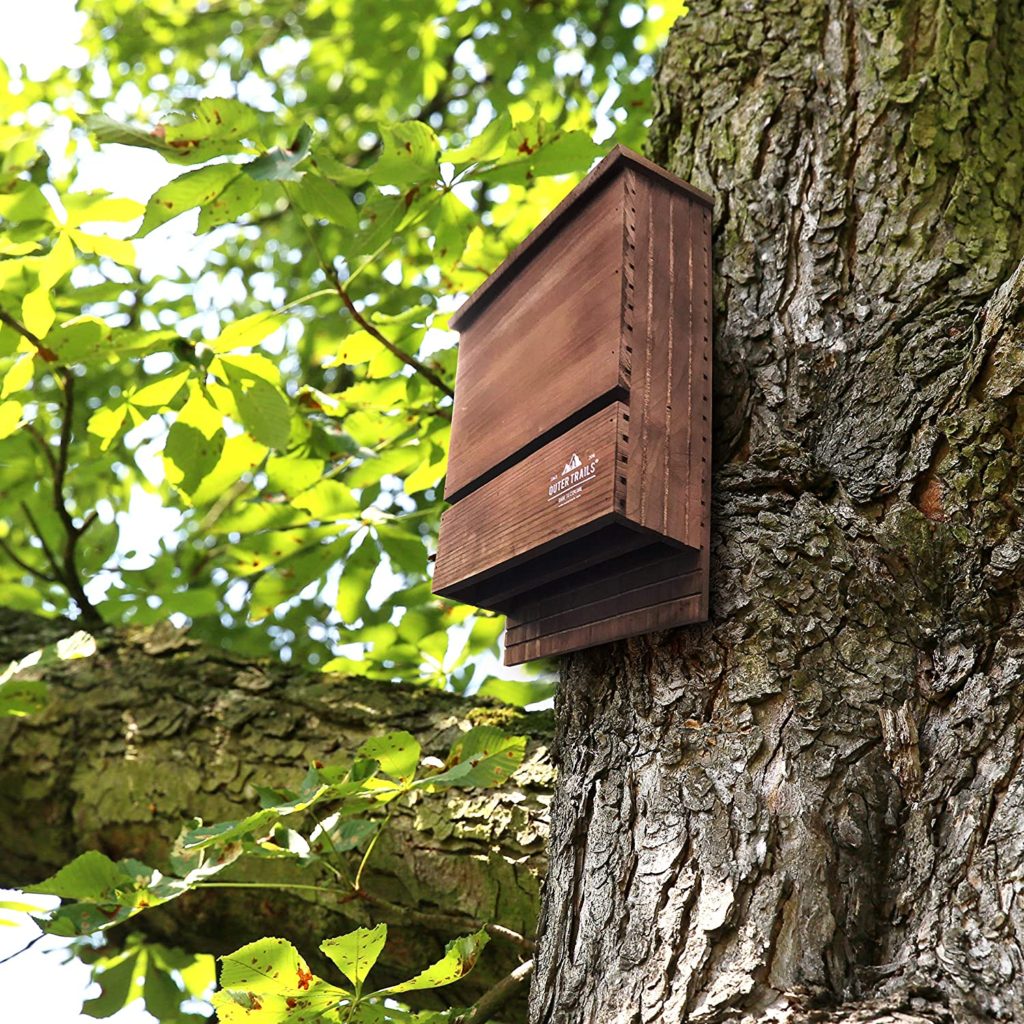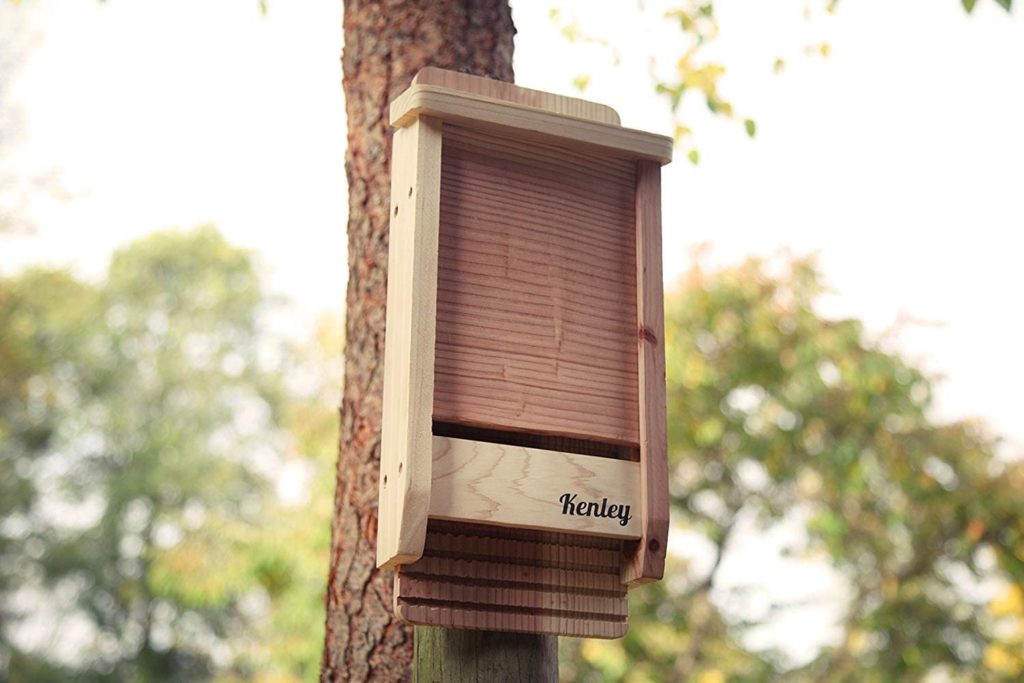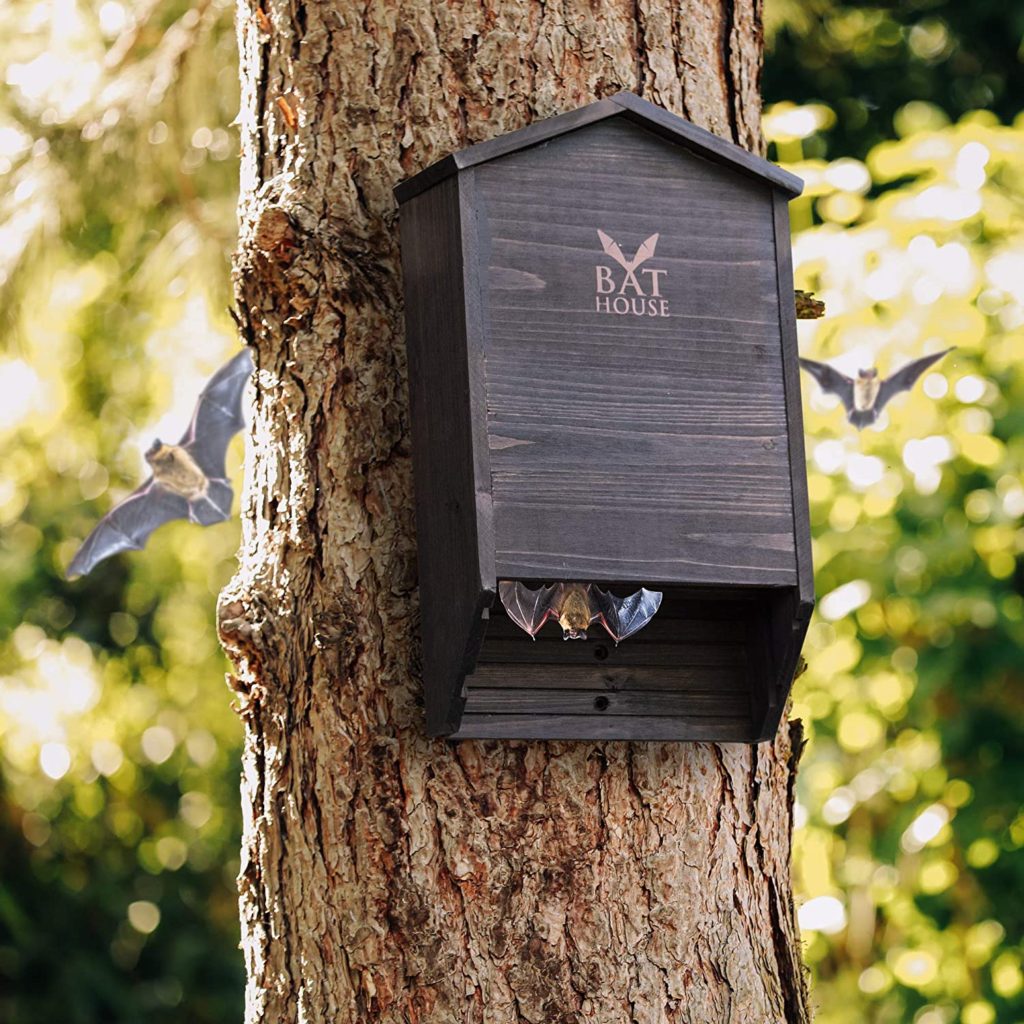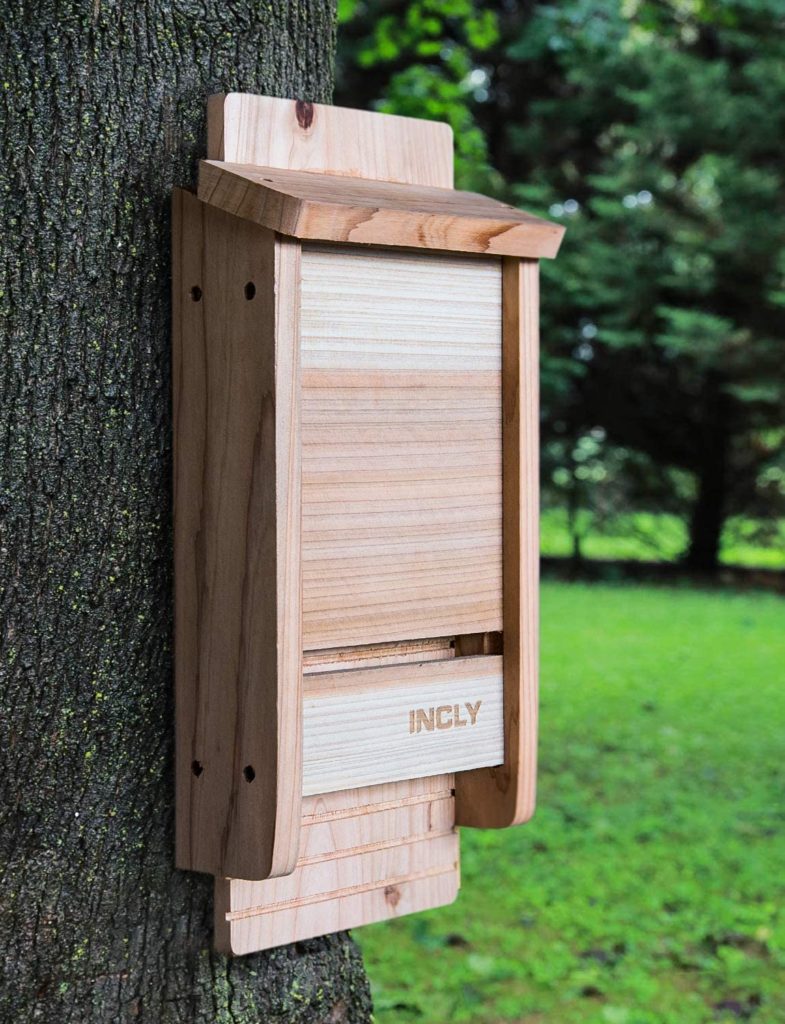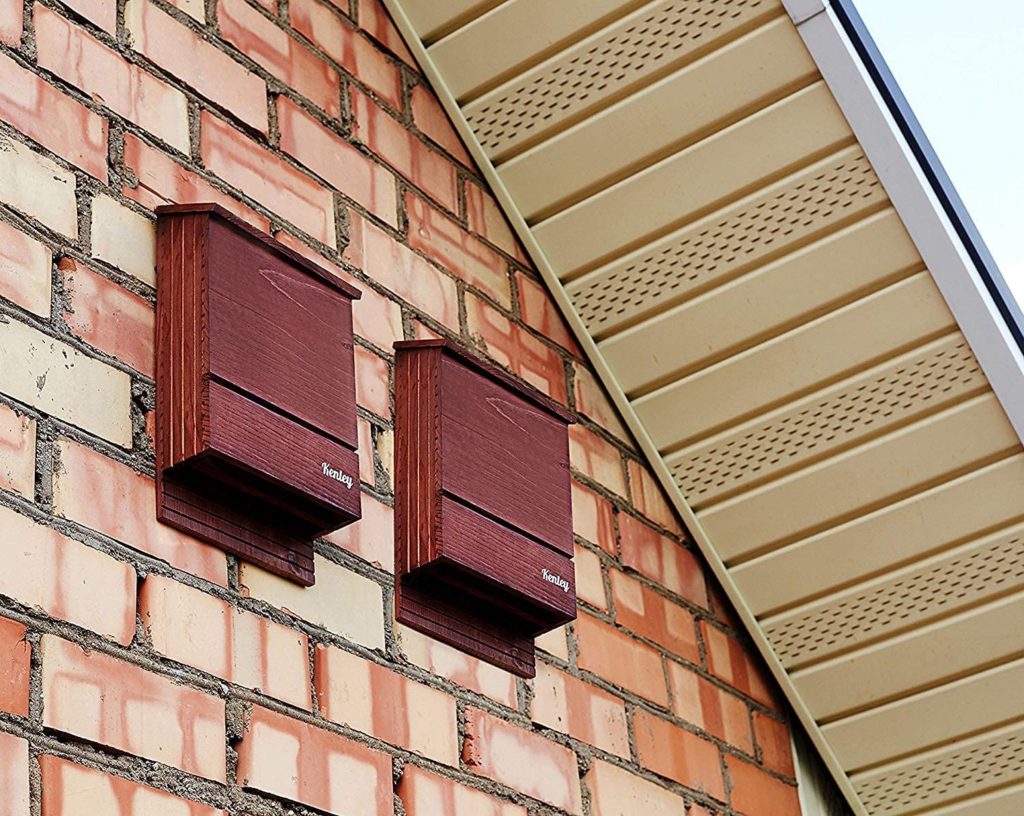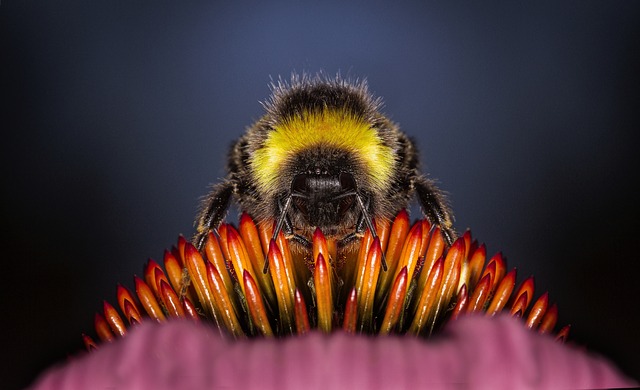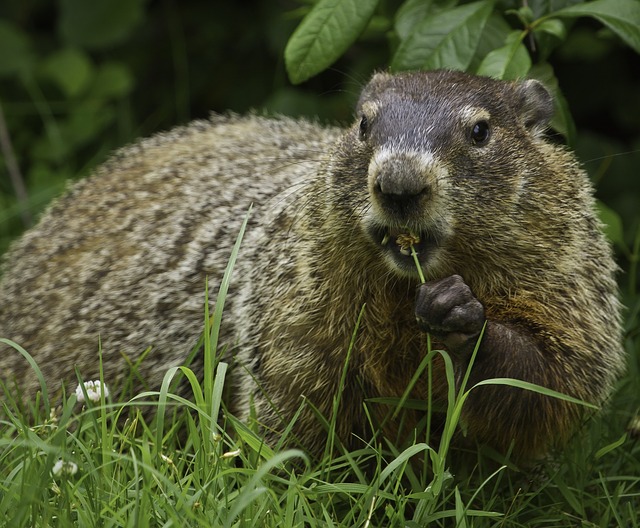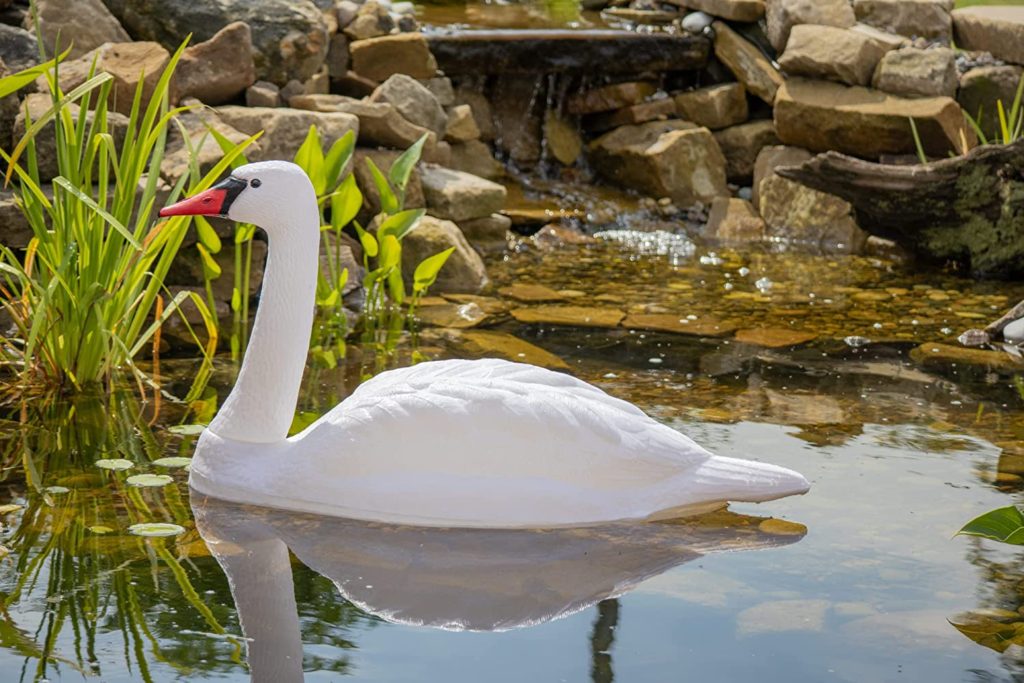
Geese and ducks can be a huge problem for anyone who owns a pond, pool, or even lawn. A swan decoy can help to keep these pests away so you don’t have to deal with them and the mess they leave behind. Here is everything you’ll need to know about swan decoys and how to use them effectively.
Meet The Mute Swan
Almost all swan decoys for pest control are specifically made to look like the mute swan. One of the reasons for this is that despite its elegant appearance the mute swan is considered to be the most aggressive species of waterfowl in the world and other birds know it.
Male mute swans are especially protective of their feeding area, mate, nest, and offspring. They will not hesitate to hiss, chase, or even attack a threat that gets too close. It doesn’t matter if that is another type of waterfowl, predator, human, or even something as large as a boat.
This species is actually one of the largest of all waterfowl and one of the heaviest flying birds in the world so when it attacks it can be very intimidating but also dangerous for other birds. Ducks and geese can be seriously injured and are sometimes killed. (In the UK and Australia where the black swan, a slightly less aggressive relative of the mute swan, is more common, a black swan decoy is often used as a waterfowl deterrent instead.)
Swan Decoy Basics
Swan decoys are typically hand-painted (with all-weather paint) to have the same easily identifiable markings as real mute swans. They will have all-white bodies and distinct orange beaks with a black outline. These markings along with their large size make them very realistic but also easily recognizable by waterfowl so that they instantly know to stay away.
Because they can look so real it’s not uncommon for decoy owners to have people stopping to admire them thinking they are actual swans. Decoys are designed to float but can also be used on land. And they are manufactured from tough yet lightweight resin plastic so that they can be left in the water and outside without an issue.
Common Waterfowl Problems
There is a range of problems that ducks and particularly Canadian geese cause home and business owners. Not only are they loud but they also trample plants, eat expensive grass, and create a disgusting mess when they go to the bathroom all over the place. They don’t just make a mess on lawns but also in the water of pools, ponds, and anywhere surrounding them like decks and patios.
This requires a lot of cleaning especially when a large flock decides to land on your property. This is particularly true with Canadian geese as each individual bird will produce several pounds of waste per day. Their poop can cause harmful algae blooms in the water and can contain microscopic parasites such as cryptosporidium which is potentially hazardous and even deadly to humans.
What To Expect When Using A Swan Decoy
Because ducks and geese are naturally afraid of mute swans, decoys can effectively be used on land or in the water to keep them away. Typically as they fly overhead and see a large white swan decoy below they will instinctively decide to find somewhere else to land.
Fortunately not only can swan decoys get rid of geese and ducks when used properly but they are also known to work for herons too. This can be a huge help for pond owners since herons love to eat fish and can quickly devour large numbers of them. Decoys are even known to keep pesky seagulls away as well. However, unlike predator decoys, swans won’t scare away backyard animals that you do want to stick around such as songbirds.
Using a swan decoy also has the added benefits of being: totally humane, environmentally safe, and inexpensive when compared to hiring a pest control service. And once they are set up they will work around the clock each and every day.
Where And How To Use Swan Decoys
You’ll need to keep in mind that decoys and deterrents of all types are never guaranteed to work 100% of the time. However, if you follow the info and tips here you will be increasing your odds of success dramatically.
In The Water
Decoys are hollow which allows them to float. Therefore they can be used right in your pond, pool, or hot tub. You can also use floating swan decoys for geese and ducks in lakes, rivers, and canals as well. Placing a decoy in the water helps to give it the appearance that it is swimming since it will be moved around by the current and wind.
When using a swan decoy for pool or pond protection they will also be moved around by any pumps and fountains as well. To make sure that decoys don’t get hung up in one spot, corner, or float away in larger bodies of water they typically come with one or more attached eyelets so they can be anchored down.
Most people attach a cable, fishing line, or rope to the eyelet on the swan and then to something heavy to anchor it on the other end. You may want to purchase decoy weights to use as an anchor. But items like bricks or fishing sinkers can be used too.
You’ll want to remember of course that while they are tough enough to handle all weather conditions plastic swan decoys can crack if they are left in the water when it begins to freeze. So you will want to make sure to store them properly during the winter months.
On Land
While they can float, you can also use swan decoys for ducks and geese just as successfully on land. When setting up a decoy on land you may want to place it in a highly visible spot on your lawn or field so it can easily be seen from above. If you have a water source on your property you may also want to place the decoy near the water’s edge. This will help to work as a deterrent for waterfowl exiting the water.
Placing it directly on the path the ducks and geese use to walk from the water to your lawn can also work too. And don’t overlook putting one on a dock or swim raft either. Some models will include anchoring stakes to help keep a decoy securely in position when it’s used outside of the water which can be very helpful.
The most important thing you will need to remember is that unlike a floating swan decoy which will move with the water when a decoy is used on land it will move at all. Therefore in order to keep waterfowl from figuring out that it is not real, you will need to change its location every few days.
Top Tips For Success
Here are some extra tips that you’ll want to keep in mind as well:
A Helpful Feature For Realism
When deciding which decoy to purchase, it can be very helpful to choose a model that has both an adjustable head and neck. This feature gives you the ability to position and pose your decoy so that it looks as realistic as possible. It also allows you to change things up every once in a while so that geese and ducks don’t figure out that they are looking at a fake swan.
A Pair Of Swans For Maximum Effectiveness
Individual swans can be highly efficient. However in general the most effective option is to use two swans together. For this reason, many manufacturers sell them in sets of two. By using two decoys you are making it look like you have a mating pair of swans on your property.
And waterfowl naturally know that when they see a pair of mute swans the male will be guaranteed to be much more aggressive than any lone swan. With two swans you also have the advantage of being able to use them in more than one location at the same time such as one in the water and one on land.
Predators Can Be A Big Help
When you have a large area of land or water that you’d like to keep waterfowl-free adding decoys of predators in addition to your swans is another way to increase the odds of success. A coyote decoy or fox decoy can be used on the ground while swans are placed in the water. These are natural predators of waterfowl and therefore scare them. They will also help to keep a range of other pests away as well.
For bigger ponds, pools, and lakes a floating alligator decoy is often used with swans. These also move with the current of the water so they appear to be swimming just like a living and hungry gator. An alligator decoy will also help to deter herons and raccoons too.
Other Decoy Uses
Decoration
Because the mute swan is considered to be one of the most elegant of all birds decoys are often used in pools and ponds as decorations. Swans are actually a symbol of love and faithfulness since a mated pair will stay together as a couple for their entire lives. For these reasons, they are often placed in ponds and pools for weddings.
Inside the home wooden decoys are popular to use as decoration. Unlike the plastic type, these are made strictly for beauty and are not meant to be used outside. They will often be hand-carved and hand-painted. Many options also have an antique finish to make it seem as if they are much older than they really are. A wooden swan decoy is ideally used as décor in country-style homes.
Hunting
Different than those used for pest control, swan hunting decoys are made to look like species such as trumpeter and tundra swans. That’s because these are game species while the mute swan is not. The decoys are used to attract swans so the hunters can get a shot at them. Hunters also use swan decoys for duck hunting too.
Because these swan species are not aggressive to ducks, hunters add a few of them to their duck decoy setup to work as “confidence decoys.” They help to give the setup that extra bit of realistic detail which will hopefully trick nervous ducks into being confident enough to land nearby. As an added bonus the large size of the swan decoys also helps the ducks to easily see the setup even when flying high above.
There are a few popular brands that make them such as Carry Lite swan decoys and Tanglefree swan decoys for example. Trumpeter and tundra swans both look very similar to mute swans with the main difference being that they have black instead of orange beaks. So many hunters will actually buy decoys used for pest control and transform them into trumpeter or tundra swan decoys by simply painting the beaks black.
From waterfowl control to decoration or hunting a swan decoy can be used to accomplish several goals. And with this guide, you now know everything you’ll need to get started and be successful with them!
Start Shopping for Swan Decoys!
Common Pond Pests And How To Deal With Them
While there are many benefits to owning a pond, one of the drawbacks is dealing with pests. And whether big or small they can definitely be a nuisance. Here are some of the most common pond pests you’re likely to encounter along with the basics on how to deal with...
What Direction Should A Bat House Face?
Buy on Amazon Bats are very particular when it comes to whether or not they will move into a bat house. One of the most important factors is the temperature inside, which will be strongly influenced by the direction that the house is facing. So what direction should a...
Does Copper Tape Stop Slugs?
Does copper tape stop slugs? The answer is yes. And you can use this simple solution to keep your plants safe from those slimy plant-eating pests. Repel Slimy Garden Invaders Without Harm Despite being relatively small and very slow-moving, slugs can do a lot of...
When To Put Up A Bat House
Buy on Amazon Bats can be a big benefit to your yard. But they can be picky when it comes to where they actually decide to roost. Knowing when to put up a bat house can help to tip the odds in your favor. Basic Seasonal Bat Behavior Many people don’t realize that in...
The Best Advantages Of Using Copper Tape For Snails
Snail damage is no laughing matter, especially when you’ve put a lot of time and effort into your garden. Most people don’t realize that by simply adding copper tape snails can be quickly deterred from eating your plants. And here are the best advantages of using this...
Copper Tape For Slugs
Buy on Amazon As any gardener knows, slugs can be highly destructive to a wide range of plants. But you don’t have to use baits or chemicals to keep these slimy pests from ruining your garden. By using copper tape slugs will stay away from your precious plants...
How To Use Coffee Grounds For Snails
You don’t have to kill those annoying garden snails in order to keep them from eating your plants. In fact, you can use your morning coffee as a non-lethal weapon against them. When they come into contact with your coffee grounds snails will turn right around and...
How To Use Coffee Grounds For Ants
There are endless sprays and poisons you can use to get rid of ants. However, you won’t have to look any further than your morning cup of coffee if you’d like a repellent that doesn’t contain any harmful chemicals. By using coffee grounds ants will stay away and kids...
How To Use Coffee Grounds For Garden Pests
While the majority of humans enjoy coffee, not all animals find it so appealing. In fact, when they encounter coffee grounds garden pests are often repelled by them, and that’s a good thing. So here are the critters you can expect to keep out of your garden when using...
Coffee Grounds For Slugs
Slugs can be a big problem, yet most people don’t realize that the waste produced from their morning cup of coffee can be used help to protect their plants from these slimy pests. When they encounter your coffee grounds slugs will make a hasty retreat. So here’s...
Coffee Grounds For Mosquitoes
There are countless options available to keep mosquitoes away, many of which contain harmful chemicals. Most people don’t realize that the grounds used to make their morning coffee can also function as an all-natural repellent. Here’s what you’ll need to know to use...
Using Coffee Grounds To Deter Cats In The Garden
While cats can be loving pets, in the garden they often can be pests. Fortunately, you can use coffee grounds to deter cats. Not only can they help to keep cats away from your plants but they’re also totally safe. Cat Problems 101 Unfortunately for gardeners, cats...
Bat Attractant: The Secret Weapon For Bat House Success
Buy on Amazon Purchasing a bat house is easy, however, having a colony of bats take up residence inside it is sometimes another story. To tip the odds in your favor using bat attractant can help. Here’s what you’ll want to know when considering using it. Bat House...
How To Attract Bats To Your Bat House
Buy on Amazon Having bats in your yard offers many fantastic benefits. So it’s no wonder that more and more people are installing bat houses in an attempt to get them to stay. However, you’ll first need to know how to attract bats to your bat house if you want them to...
What Does A Bat House Look Like?
Buy on Amazon Bat houses are shelters made specifically for bats. These flying mammals have special needs that houses are designed to meet. So what does a bat house look like? Well, read on and find out! Bat House Designs Houses for bats actually look like boxes. For...
What Is A Bat House?
Buy on Amazon What is a bat house? And better yet, why would you want one on your property? These are both commonly asked questions. Whether you’re just curious or have always wanted to have bats in your yard here’s what you’ll need to know. Bats are nocturnal...
The Top Bat House Benefits
Buy on Amazon A bat house is a specially designed shelter for bats. It provides them with a safe and convenient place to sleep. While they are great for the bats, there are many bat house benefits you can enjoy as well when you have one in your yard. Keep Bats Out Of...
Where To Put A Bat House
Buy on Amazon Where to put a bat house is an important decision. If it’s not in an appropriate spot, you may be putting your resident bats in danger. Or you may end up with an empty house since no bats are interested in living in it. So you’ll need to know a few...
Beneficial Garden Insects And Creatures Often Confused For Pests
There are many animals that we consider to be pests. However, many of them actually perform critical tasks and help to control the populations of much more devastating species. The following beneficial insects and creatures are ones you’ll want to keep around....
The Most Common Backyard Pests
Your backyard is an ecosystem, however, not all of the animals which reside in or near it have the manners you’d like them to. There are many different animals that can be a nuisance. Here are some of the most common backyard pests that you’re likely to encounter....
